France
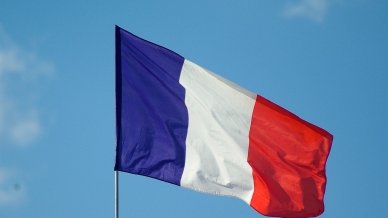
France is a place of liberty and freethought, a cradle of humanity’s greatest inventions, and the homeland of couture fashion, exquisite cuisine, and winemaking.
Cinema and aviation, guillotine, and women’s tights were invented here. In this country, people are good at singing and cracking jokes. And the French language is considered the second most beautiful in the world. Bienvenue en France!

General Information
Those who believe that France is a merely European state are very much mistaken. Though its major part is situated in Western Europe, several overseas territories and departments have belonged to France since the times of monarchy. Mainly, they constitute the islands, but there is also a territorial сollectivity in Latin America - Guiana. It is the largest overseas region of France.
Historical Background
French history is about 1,500 years of decline and prosperity, intrigues, religious and European wars, and three revolutions. Initially, it was the land of Gauls and Iberians. Later it became one of the outer provinces of the Roman Empire annexed by Julius Ceasar during the Gallic Wars.
In the 5th century, the Franks, led by King Clovis, captured Gaul. The very first thing he began to implement was building the Kingdom of the Franks.
He managed to attain that goal to a certain extent, but his power shifted to the mayors of the palace called majordomos (household managers). The descendants of new rulers - Pepin the Short and Charles the Great - succeeded in retaining the power and created a mighty state extending within the south and west of Europe.
In the 9th century, the empire’s decline came. Its territories were divided into several parts between the sons of Charlemagne. One part became the possession of Charles the Bald, and a hundred years later got the name known by the world today - France.
Then there was the period of wars with Vikings that founded their own duchy of Normandy in the northern part of the country. After the confrontation with Scandinavian conquerors, a sequence of internal religious wars and the crusades outside the country took place.
As a result, the Kingdom was destroyed, and several dozens of weak duchies and counties remained. The House of Valois gained power. The Hundred Years' War with England at first seemed like a potential success for the latter, but the national liberation movement led by Joan of Arc ended with the victory of the French troops.
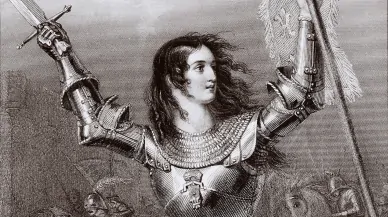
Joan of Arc
Eventually, peace was restored in the war-torn country as the starting point for establishing the absolute monarchy. Louis XI became the first king of the renewed country. During his reign, France began asserting itself as a powerful state that aspired to the leading positions in the world.
Religious wars gradually ended in the 15th century. However, 200 years later, the country underwent several wars again under the rule of different kings. Internal conflicts and wars in Europe occurred for the reason of controversies over various territories and legacies.
In 1789, the political, economic, and social systems of France encountered the first massive convulsion. That was when the French Revolution began. Monarchy as a form of government suffered a resounding defeat and was changed by the first republic. There have been four more republics during French history: 1848-1852, 1870-1940, 1946-1952, and since 1952 till modern days. The country obtained a new constitution during each of the periods.
The current fifth republic was established by Charles de Gaulle, a legendary general and hero of the Resistance Movement. He has remained the national leader and a prominent historical figure for the French up to date.

Charles de Gaulle
Nowadays, France is a large European country, a nuclear-power state, and a founding member of the European Union. It is also a member of NATO and the UN Security Council.
Geography and Climate
France borders Belgium, Germany, Luxembourg, Switzerland, Monaco, Italy, Spain, and Andorra. The UK-French border is marine.
The country is also bounded by the Atlantic Ocean, the North and Mediterranean Seas, and the English Channel.
The country’s climate cannot be called homogeneous. It usually depends on the geographical location of the regions. Western France is an oceanic climate with cool summer, mild and rainy winter, a high level of humidity and nebulosity.
The French south constitutes a subtropical climate with dry and hot summer and mild winter. A continental climate is usually in the central and eastern parts of the country, where summer is dry and hot, and winters are frosty with scarce precipitation.
Population, Language, and Currency
The population of Metropolitan France is around 67 million people. More than 2.6 million reside the overseas territories and collectivities. The capital is Paris with a population of 2.5 million people. The largest cities are Marseille (900,000 people), Lyon (506,000 people), and Toulouse (475,000 people).
It is impossible to determine the exact ethnic composition of the country because the term ‘nationality’ has a peculiar definition in the French Constitution being referred to as citizenship. That is why even now there is no data on ethnic composition because nobody gathers and analyses it.
The official language of France is French, but it is not spoken everywhere. Local languages are widespread in many regions. For example, the Bretons speak Breton, and the Flemish people speak Flemish. In Alsace, located within the French-German border, the German language is quite common. French is also spoken in Corsica but contains Italian dialects.
The euro is the official currency of France. To enter the country, a Schengen visa is needed.
Directions
Getting to France is possible in many ways from European countries. Undoubtedly, the main one is an air flight. The average price for a return ticket within Europe will be approximately €200.
Experienced travellers may fly with transfers, or use the services of low-cost airlines.
The other option is a guided trip by bus organised by a travel agency, which will cost less.
Accommodation
You should be ready for significant expenses even if you are going to spend a short period in France. Staying in the country is very expensive. And this is exactly true in terms of the hospitality industry.
What surprises the tourists coming here for the first time most is quite moderate conditions in budget-friendly hotels in comparison with the other countries.
A typical room in a French two-star hotel is a tiny space with minimum facilities that costs €35 - €40 per night. It will be necessary to take into account the local realities when choosing a higher-class hotel. The one with three stars in France will be in line with an Italian or German four-star hotel. The price will be twice higher - €70 - €80.
Therefore, the average price of a French four-star hotel room is around €100.
Interestingly, there are very few five-star hotels in France. Only around 30 of them offer their services to millions of tourists every year.
Below are several examples of budget-friendly hotels:
- Lemon Hotel Tarascon is similar to a cheap hostel with the service and facilities offered. The rooms with bunk beds are shared as well as bathrooms and toilets on each floor. Wi-Fi is free. Pets are allowed.
- Eklo Hôtels Le Mans is a hotel in Pays de la Loire. Each room has a separate bathroom and ironing facilities. The other services essential for a modern person like Wi-Fi access, parking, and a TV set can be available for an extra charge.
- Hôtel Première Classe Roissy Villepinte Parc des Expositions is a network two-star hotel in Villepinte, an hour-drive from Paris. The rooms are equipped with air conditioning, ironing facilities, and Wi-Fi access. There is a bathroom in each room.
- Hôtel Pastoral is a hotel with separate and shared rooms in Nice, a 10-minute walk from the Marc Chagall National Museum. There is also a shared kitchen. The beaches of the Promenade des Anglais are located a 2-km walk from the hotel.
- Hôtel Luxembourg is a budget-friendly hotel in Lourdes, Hautes-Pyrénées. The rooms are small but cosy with separate bathrooms. Breakfast is included in the price. Wi-Fi is free, and pets are allowed.
Motels and campings are a great option if you have to cut down the expenses. Campings offer bungalows and tents, which will cost around €350-€450 per week for a group of five or six people.
If you are short of money but need a place for a night and shower, a hostel is a way out. Though the conditions may be poorer than in one- or two-star hotels, the price will match - not higher than €12 per night. Breakfasts are paid separately. Sometimes hostels may have some age restrictions for the guests.
A trip to the French countryside is a perfect opportunity to see the life of villagers and to save on accommodation. In a village, you may be offered a room in chambre d’hôte, a small country inn. It is a comfortable accommodation with breakfast included in the price. Moreover, it will cost approximately the same as a city three-star hotel room, but with much better conditions.
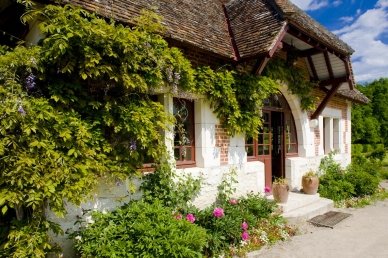
Chambre d’hôte (A small country hotel in France)
A long-term trip to France requires a different approach to renting an apartment. It will be quite reasonable to rent accommodation offered by the landlords on the letting websites. The first three days will cost €50 - €70 per night, but there might be a good discount when renting for a longer period. The longer you rent, the better the discount.
Places to See

Sightseeing attractions in France are world-class masterpieces. Only exuberant superlatives are used to describe this very special atmosphere.
Paris
Wandering around the quarters, streets, and squares of the French capital enables us to see the mini-version of the entire history of France. Everybody has known these names since childhood even without visiting Paris.
The heart of Paris is beating with Champs-Élysées, Montmartre, five royal squares with the statues of French kings and magnificent fountains, an enchanting and a couple-of-metres-wide Medieval Rue de la Huchette, and Rue Crémieux that gleams with all colours of the rainbow.
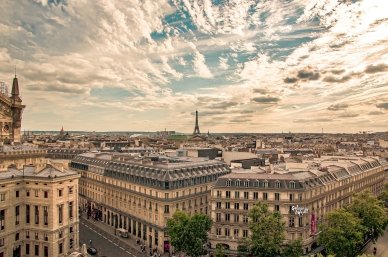
Paris, France
Champs-Élysées
This 2-km avenue in Paris was constructed in the 17th century in order to dry and gentrify the marshy terrain near the Tuileries Palace, the royal residence of that time. The palace was burnt in tumultuous times of the Paris Commune. But the Avenue of Champs-Élysées has remained the most popular in the French capital.
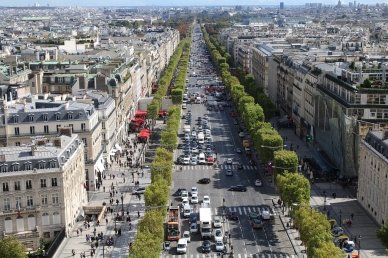
Champs-Élysées
Being very short at first, the boulevard was prolonged to the Place de l'Étoile (also known as the Place Charles de Gaulle) after the Grande Armée of Napoleon won the Battle of the Three Emperors near Austerlitz. The Arc de Triomphe, designed by Jean Chalgrin, was 50-metre high and located in the centre. It is the highest arc of its kind in the world.
At present, Champs-Élysées connect several squares. There is also the residence of the French President.
Every year on Bastille Day, the military parade is held on the main avenue of the country. The route of the national bicycle race Tour de France is also impossible without passing through Champs-Élysées.
Montmartre
It used to be the very edge of Paris, a place selected by young and unknown artists, writers, and sculptors for the lowest tenancy prices.
As time passed, Montmartre gradually turned to a bohemian neighbourhood with its piquant atmosphere of art and freedom in all senses. Local cafes and cabarets gained popularity as party places of Paris where Picasso, Degas, and Renoir would while away their evenings over a glass of wine.
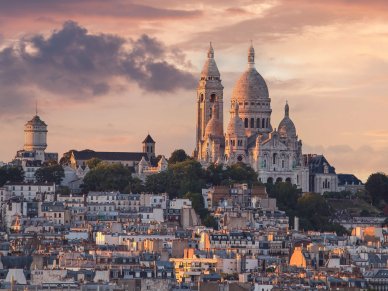
Montmartre, Paris
If you want to delve into the nightlife of Montmartre, go to Moulin Rouge, the iconic cabaret of enchanting performances. However, this tour is suitable only for adults because at night this locality becomes the place where some entertainment offers may sound not really appropriate.
Eiffel Tower
The symbol of Paris and the most recognizable construction in France has not always been the admiration of Parisians and tourists.
The Tower was built in 1889 and thus became considered an utterly incongruous construction that was spoiling the image of the city centre.
The petitions of unsatisfied residents were left with no response. So all they could do was to grow fond of Gustave Eiffel’s creation. Nowadays, the Tower embodies Paris and France in general. It also holds a record of attendance among all the capital’s attractions.

Eiffel Tower, Paris
Museums
Louvre is one of the world’s largest museums. There are around 35,000 exhibits that represent the artistic endeavours of humankind from antiquity to the middle of the 19th century. Dozens more masterpieces of the world’s greatest art are kept in its repositories.
The exhibitions are constantly updated, and every year more than 10 million tourists from all over the globe come to see them. Leonardo da Vinci’s Mona Lisa draws thousands of admirers every day who aspire to have a close-up look at the famous portrait. It is a stroke of sheer luck for everyone who manages to squeeze through the big crowd.
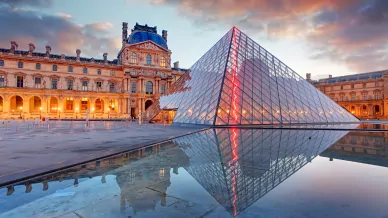
Louvre Museum, Paris
The Pompidou Centre will be interesting for everyone fond of modern art. It has been created to study and support various art directions like dances, music, and different genres of fine art.

The Pompidou Centre
Three years ago, it was impossible to imagine a sightseeing tour of Paris without the legendary Notre Dame de Paris. However, in spring 2019, a big fire broke out, and a major part of the wooden constructions burnt out.
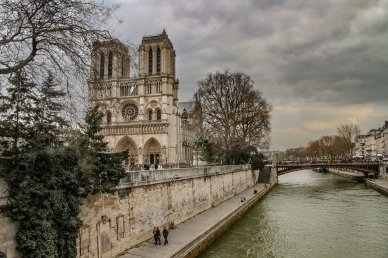
Notre Dame de Paris
The roof was destroyed almost completely. The 19th-century spire burnt, but two towers and amazing stained-glass panels remained undamaged as well as the organ. But the extinguishing foam did some structural damage to the latter.
As if providentially, the world-known sculptures of chimeras were sent to restoration five days prior to the fire. Around one-third of art pieces, preserved in the cathedral for centuries, have been saved. Among them, there is the Crown of Thorns, several sculptures, and paintings of the prominent May series. The saved Mays were sent to renovation too.
At present, the cathedral is under restoration. According to preliminary estimates, it will take more than twenty years and cost at least €1 billion. But above all, there is hope that Notre Dame will relaunch its services years later.
Provence
The middle of summer is the best time to come here because lavender fields begin blooming at the end of June. This fabulous spectacle occurs wave after wave and lasts one and a half months. Different parts of the territory bloom at various times. So you will need to buy a map of lavender bloom at any travel agency in Provence to delight in the aroma symphony of this paradise.
Plateau de Valensole is the most stunning spectacle because ten fragrant lavender fields have stretched for kilometres of the area. This picturesque locality in Alpes-de-Haute attracts thousands of tourists during the season. Local people hold lavender fests with fairs and vivid shows to entertain the guests.
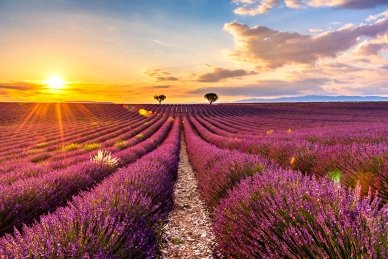
Plateau de Valensole, Provence
French Riviera (Côte d'Azur)
This coastline extends to the southeast of the Mediterranean. It is the place of the best climate in whole France. Nowhere else there is such a comfortable and warm summer and mild winter.
A clean mountain air mixed up with sea breezes creates a healing atmosphere where breathing is exceptionally light. Côte d'Azur has remained one of the best European resorts, but the real estate prices break all possible records. Such inconvenience as pebble beaches does not deter the annual influx of tourists from arriving here, among whom there are lots of world-famous celebrities.
The best way to explore the best part of the French Riviera is to hire a car and embark on a tour from Nice as a starting point. The capital of Côte d'Azur is the focal point of theatres and museums within the entire east of France.
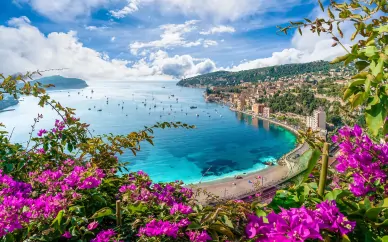
Bird's eye view of the French Riviera coast in Villefranche-sur-Mer, Nice region, France
Menton is the next must-visit place. Proximity to Italy has left its trace on everything: nature, architecture, and lifestyle. The olive and citrus groves, houses, and temperament of local people resemble the Italian lifestyle much.
February is a very special time here. Fête du Citron, or Lemon Festival, is held during this period with the lemons grown in Menton that yield fruit all year round.
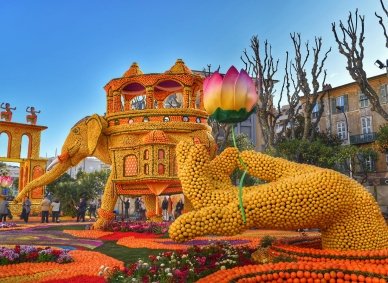
Fête du Citron, Menton
A paradise for gamblers is located 20 km to the east of Nice. It is the Principality of Monaco, a fabulous city-state with a population of 40,000 people. Local parks, streets, and squares look like beautiful paintings.
European beau monde fascinated with gambling come to play a game of poker or roulette in Monaco casinos. You may also have a good deal of luck in outplaying a celebrity opponent if you have some hundreds of dollars.
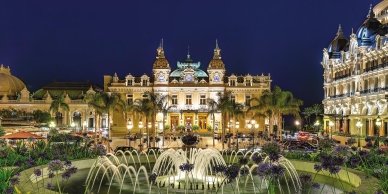
Casinos in Monaco
Cap d'Antibes is a beach place and quite an expensive resort. Prices of hotel rooms and real estate run high. However, the sandy beaches here are predominantly municipal, which means that they are free. Moreover, the beaches are perfectly clean and well-maintained.
Local residents typically spend their weekends there having a picnic. So you may enjoy your time with a basket of crunchy French baguettes, cheese, fruit, and wine.
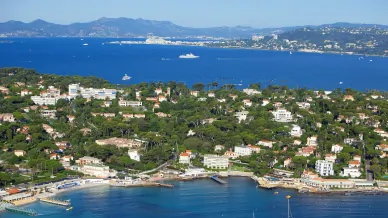
Cap d'Antibes, France
The other three cities in this journey are Cannes, Saint-Raphaël, and Marseille (the second-largest city in France). The road between the cities is an adventure itself. You will encounter magnificent red cliffs of the Massif de l'Esterel, villages with beautiful beaches, and the hospitality of local people.
Castles
France is the country of castles. In every region, there is definitely at least one monument of the Middle Ages architecture. In the Loir river valley, there are dozens of them. Moreover, all castles have been renovated and now welcome their visitors.
The most known are Chenonceau, Blois, and d'Amboise. They were built between the 10th and 14th centuries and served as family seats, hunting lands, and protection from the enemies for their crown-bearing owners.

Château de Chenonceau in the Loire Valley
The castles have changed their owners several times during history and have undergone a lot of wars and three revolutions. At present, they house museums where the overwhelmingly luxurious interiors of royal houses have been reproduced.
The cost of admission tickets ranges from €5 to €20 depending on the type and length of visit. Getting there is possible by high-speed train or bus from Paris.
Food
No cuisine in the world would be so distinct in such stratification as the French one is. It has even the folk and aristocratic directions.
Folk cuisine is about filling, easy-to-cook, and cheap dishes. The main principle here is to mix what you have and put it into an oven, pan, or frying pan. A great example is a French Provençal ratatouille made of any fresh vegetables layered in a baking pan to be roasted in an oven.

French Provençal ratatouille
The aristocratic cuisine is quite a different matter. The arbiters of cooking fashion in the court cuisine were the House of Bourbon. The court chefs were vying with each other to impress the royal family. They created exquisite sauces, salads, meat dishes, and mouth-watering desserts.
Many of the above-mentioned delicacies have not been forgotten. Béchamel, béarnaise, hollandaise, and velouté sauces make the world’s basis for cooking the multitude of new and more modern varieties. Besides, they are always served with many meat and fish courses.
The legend of French cuisine is the onion soup, served as a separate helping in the cooking pot. The soup is thick, filling, and flavourous, and usually cooked till the onions become caramelized. Though it seems easy to cook, one may need enough patience and experience.
There are two theories of origin. According to folk theory, a Polish chef brought the recipe for onion soup. However, the aristocratic theory says that King Louis XIV cooked the soup by himself when he found out he had been left alone without foodstuffs and chefs in his hunting house.
In fact, it does not matter where the French onion soup stems from. It has remained one of the favourites in any French family for centuries.

French onion soup
When in France, you will take a keen interest in the food culture of local people. A typical dinner usually consists of seven dishes. At first, starters are served and then followed by a helping of soup.
Then comes the main course. As a rule, it is a meat or fish dish with a salad. Cheese platter and wine are also an integral part of any course.
The eating habits of the French may look a bit shocking sometimes. They dip everything into a sauce, be it meat, fish, cheese, or bread.
Cookies, waffles, or toasts should be slightly dipped in a cup of coffee without leaving oily traces, crumbs, or pieces on the surface. Interestingly, having become presidents, ministers, or bankers, the true French do not change their habits even during ceremonial or dinner parties. The principle of dipping the food remains the same. Though it may not seem nice, the taste is fantastic!
Cheeses and wine are the peculiar centuries-old pride of the French. Cheesemaking has developed for hundreds of years. And more than 200 cheese types have been created. A plate full of thin cheese slices as a main course or just an appetizer for guests became an essential delicacy on the table long ago.
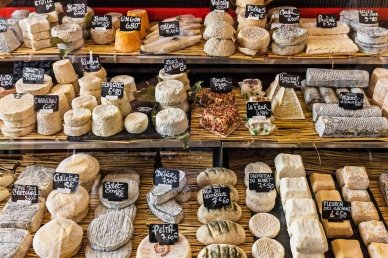
French cheeses
Each region has its world-known specialty. The southern part of France is the Mediterranean coast near Italy. That is why the menu of local people always includes a lot of fish and seafood. However, there are regions quite remote from the sea where food is a bit heavier and abundant with meat and vegetables.
Germany has impacted neighbouring Alsace a lot. Local cuisine is very similar to the German one. They eat the filling and fattening dishes like potatoes and pork stew, sauerkraut, and flambe fruit as a dessert.
The cuisine of Provence, on the contrary, contains a multitude of vegetable dishes. Vegetables are mixed in extraordinary combinations and then boiled, fried, roasted, or just eaten raw.
French desserts have come out to the world from the exquisite aristocratic cuisine almost completely. Some of them, like macarons, have become the present from the Italians and English. Like scientists, court chefs were seeking something unusual and, as a result, invented choux pastry and marvellous desserts made of it like éclairs and profiteroles.

Choux pastry
France is the global benchmark in many respects. French cheese and wine are considered the best in the whole world. French perfumes and cosmetics are truly unsurpassed. Like jewels, French literature, art, and architecture decorate the crown of humanity.
FAQ
What is France's official name?
The official name of France is the French Republic ("République française" in French).
How much territory does France have?
France covers an area of approximately 643,801 square kilometers in Europe, making it the largest country in the European Union by land area.
What is the capital of France?
The capital of France is Paris.
What is France's population?
The population of France is approximately 67 million people.
What language do they speak in France?
The official language of France is French.
Where is French spoken?
French is spoken in France and in many former French colonies and territories around the world, including parts of Canada, Africa, the Caribbean, and Southeast Asia.
Is there a lot of diversity in France?
Yes, France is a diverse country with a mix of cultures, ethnicities, and religions, largely due to its history of immigration and colonial past.
What are the top 3 religions in France?
The top three religions in France are Roman Catholicism, Islam, and Protestantism.
Is France's economy good?
France has one of the world's largest economies, known for its diverse industrial sectors, agriculture, and tourism. However, like many countries, it faces economic challenges, including unemployment and public debt.
What is the currency of France?
The currency of France is the Euro (EUR).
Why did France join the EU?
France joined the EU (originally the European Coal and Steel Community, then the European Economic Community) to promote economic cooperation, prevent war in Europe, and strengthen ties with neighboring countries.
What is France governed by?
France is governed as a unitary semi-presidential republic, with an executive president and a prime minister.
Is France in the Schengen zone?
Yes, France is a member of the Schengen Area.
Do I need a visa to go to France?
Visa requirements for France depend on your nationality. Citizens of EU countries, Schengen Area countries, and some other nations can enter France without a visa for short stays.
What is unique about French culture?
French culture is known for its influence on art, architecture (including landmarks like the Eiffel Tower and the Louvre), philosophy, fashion, cuisine, literature, and cinema. France's emphasis on "joie de vivre," culinary traditions, and its significant contributions to world culture are unique.
What are France's top budget places and top expensive places?
Budget-friendly places in France include smaller towns and rural areas, like those in Brittany, the Dordogne, and Normandy.
Expensive places include Paris, the French Riviera (Côte d'Azur), and ski resorts in the Alps like Courchevel.
Is it safe to go to France right now?
Generally, France is considered safe for tourists. However, it's always advisable to check current travel advisories and exercise standard safety precautions.







